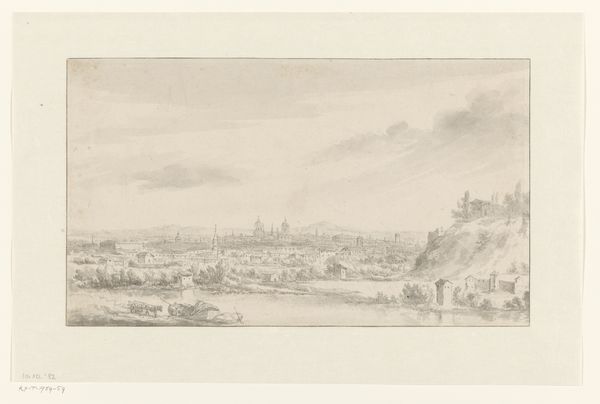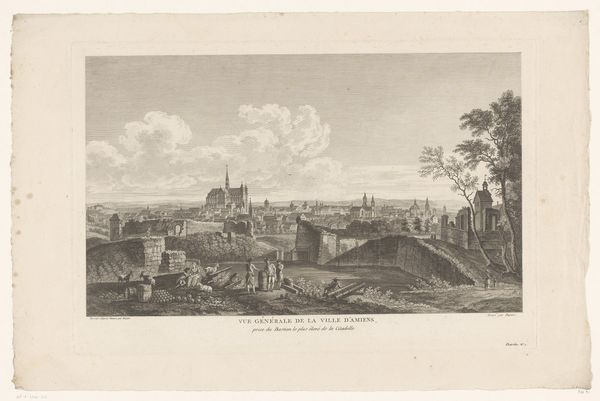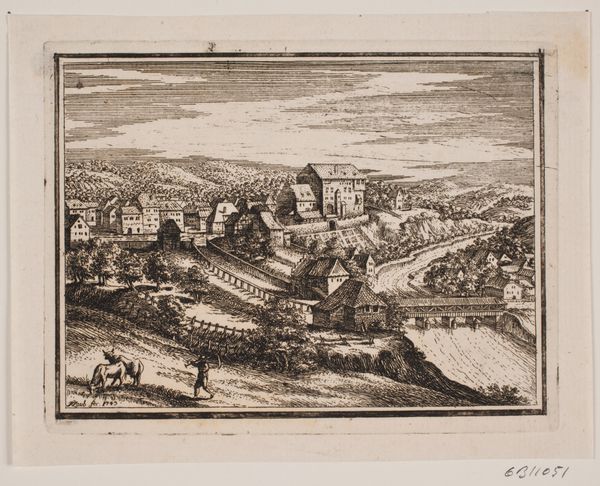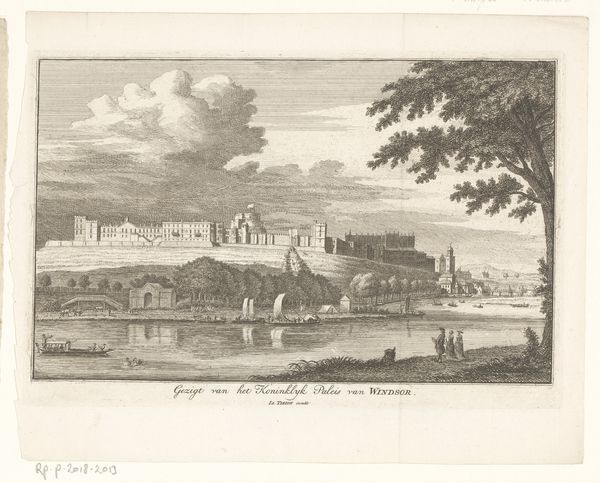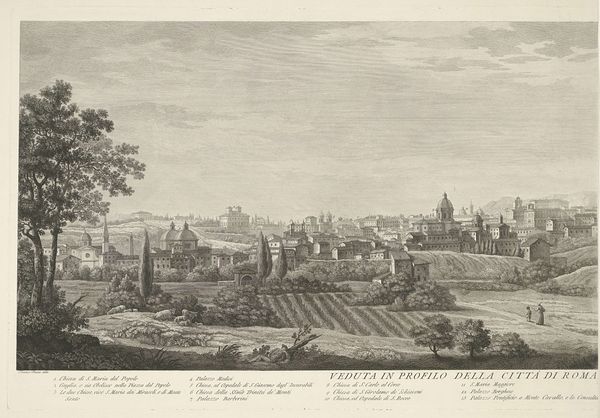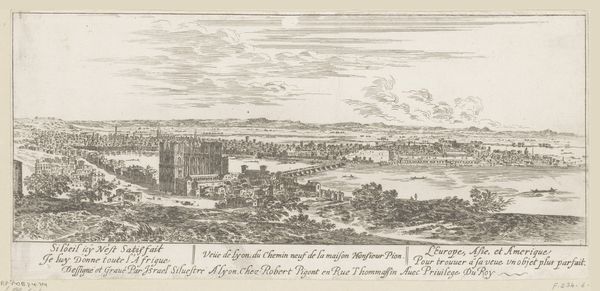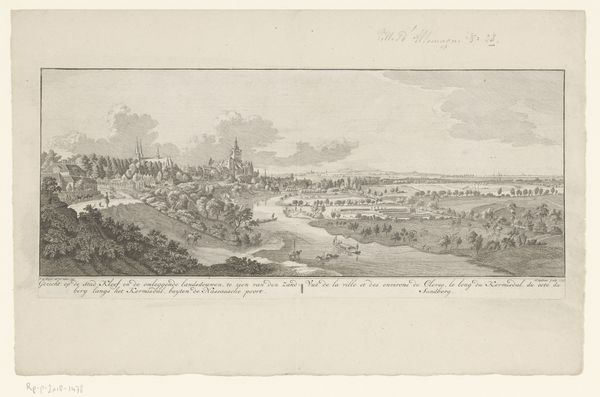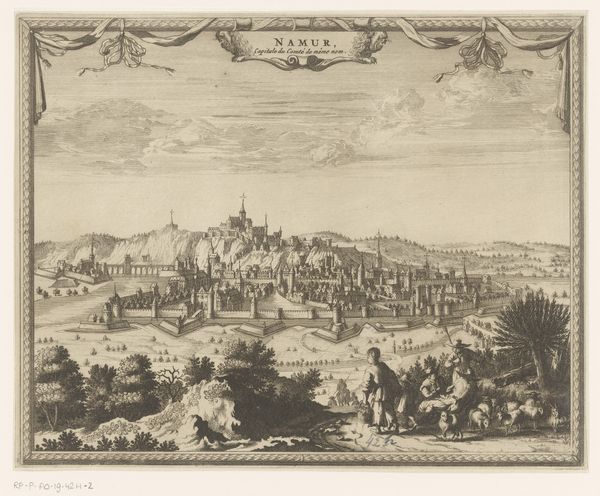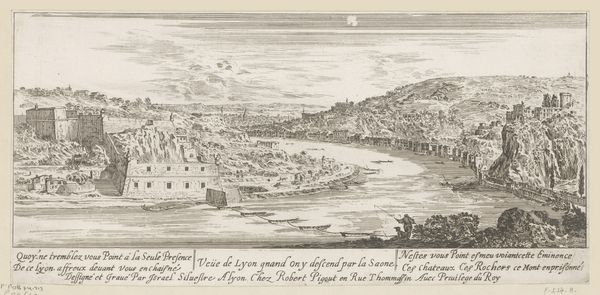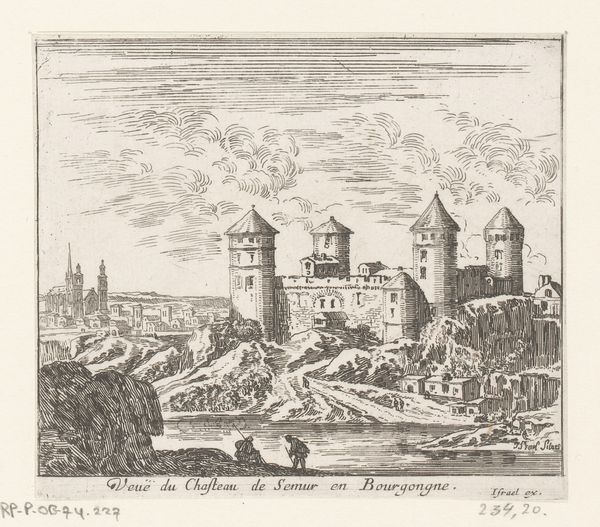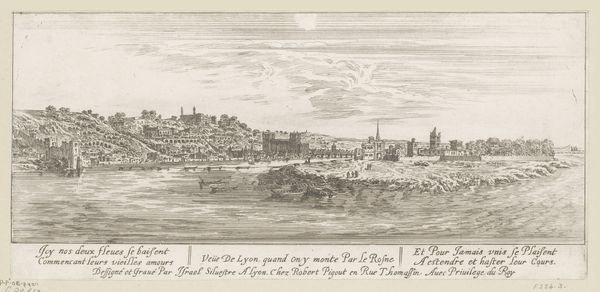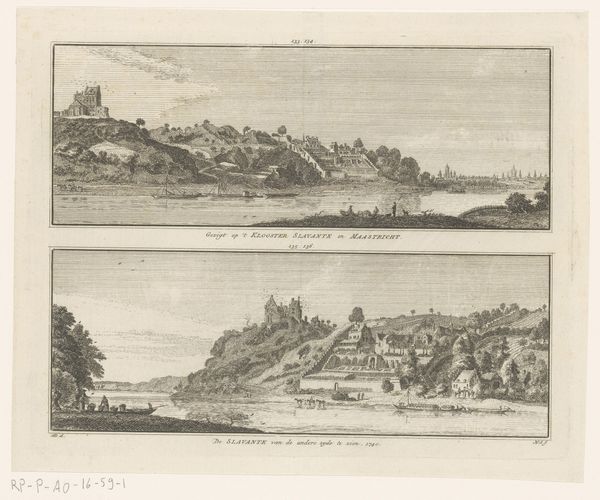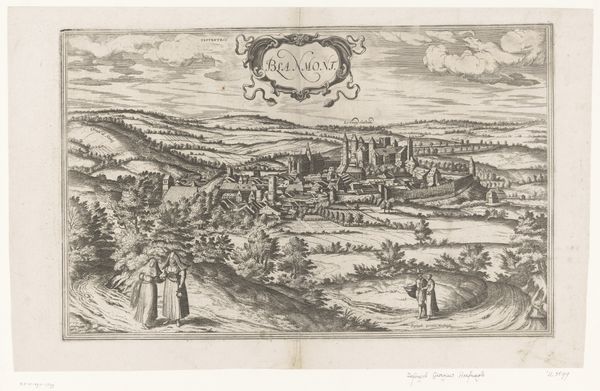
print, engraving
#
neoclacissism
# print
#
landscape
#
ancient-mediterranean
#
engraving
Dimensions: height 254 mm, width 364 mm
Copyright: Rijks Museum: Open Domain
Jean Dambrun made this view of the ruins at Selinunte using etching, a printmaking technique, in which a metal plate is coated with a waxy ground, and then scratched into with a needle. The plate is then immersed in acid, which bites into the exposed lines. Etching, like engraving, has been used for centuries to replicate images, and it flourished in a world before photography as the key means of circulating views of the world. Here, Dambrun provides a picturesque scene of ruined temples, of interest to the Grand Tourists of his era. But there’s another layer to it as well, and that is the division of labor implied by the print. Dambrun did not make the paper, nor the ink. He was reliant on the division of labor, and the economic system of his era. In that sense, the print is an object lesson in the Industrial Revolution then underway. Though we think of printmaking as an artisanal process, it was right at the heart of modern capitalism.
Comments
No comments
Be the first to comment and join the conversation on the ultimate creative platform.
